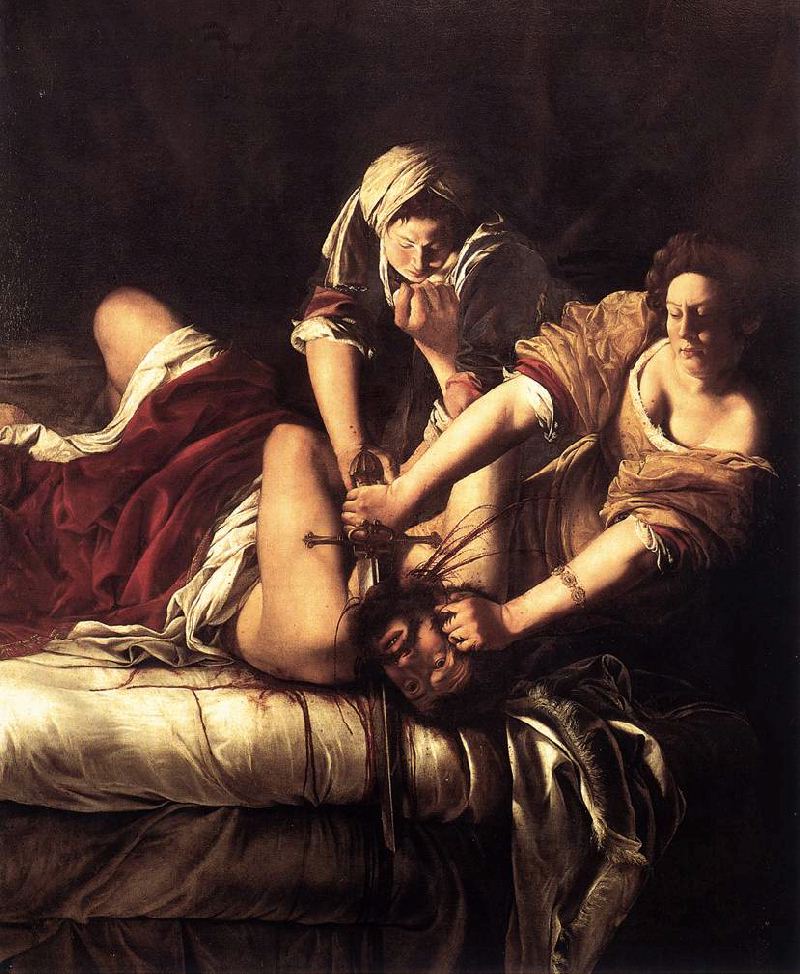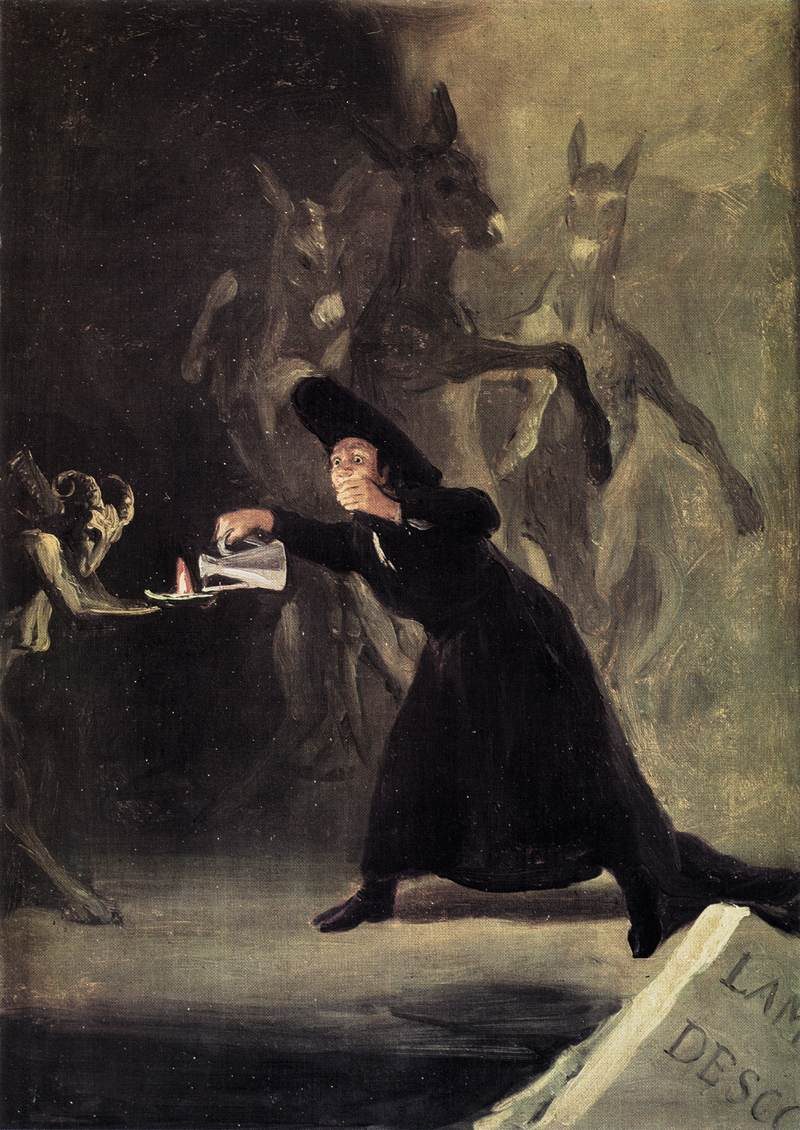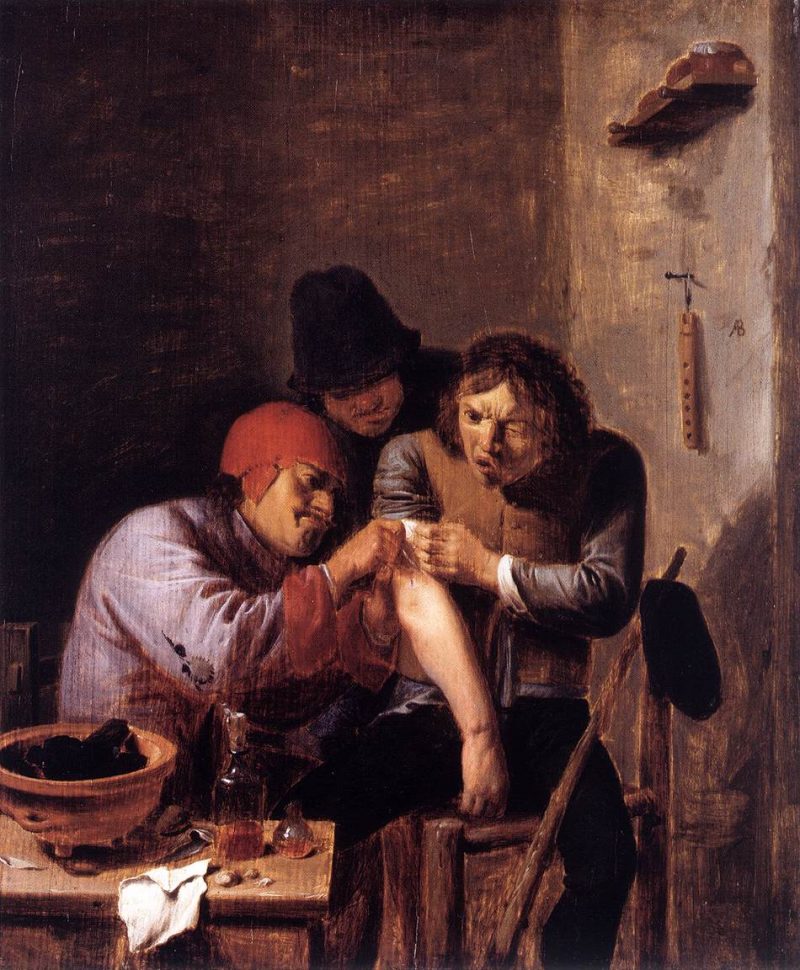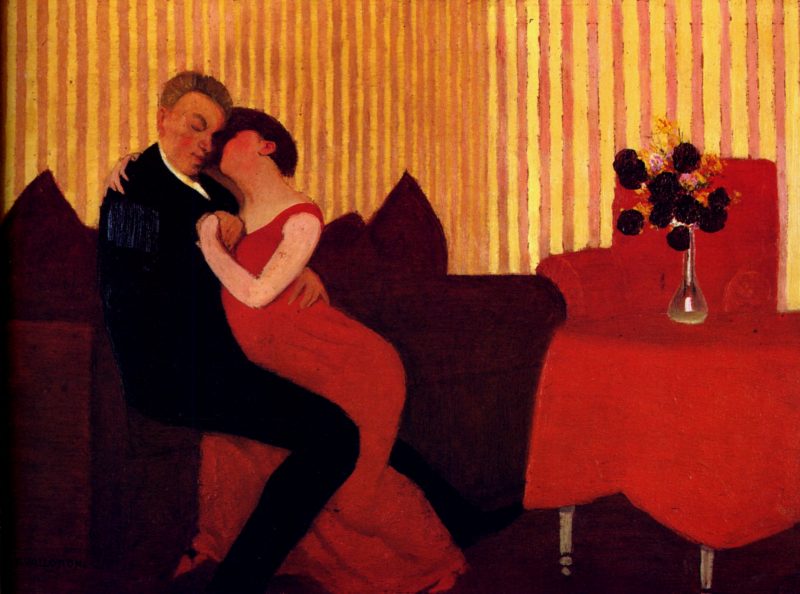According to the Old Testament, Judith was a widow and Jewish resident of the city of Bethulia, which was besieged by the Assyrian Army. Just before the army was about to completely destroy the city, Judith went to the army general Holofernes under the pretense that she would give him strategic information. He was taken by her beauty and charm, so she got him liquored up and seduced him. At this moment, she and her maid servant decapitate Holofernes, then she took his severed head back to Bethulia and the Hebrews defeated the Assyrian Army. That’s one badass lady.
Gentileschi painted this 22 years after Caravaggio’s famous version, but you can really feel the struggle in this one. It’s a much better version, perhaps owing to tumultuous events in Gentileschi’s own life. At age 17 her father’s friend, artist Agostino Tassi, raped her. He got away with it in court too. Her reputation was tarnished. Art historians have speculated that this formative event is why Gentileschi often portrays courageous female characters in her paintings.




